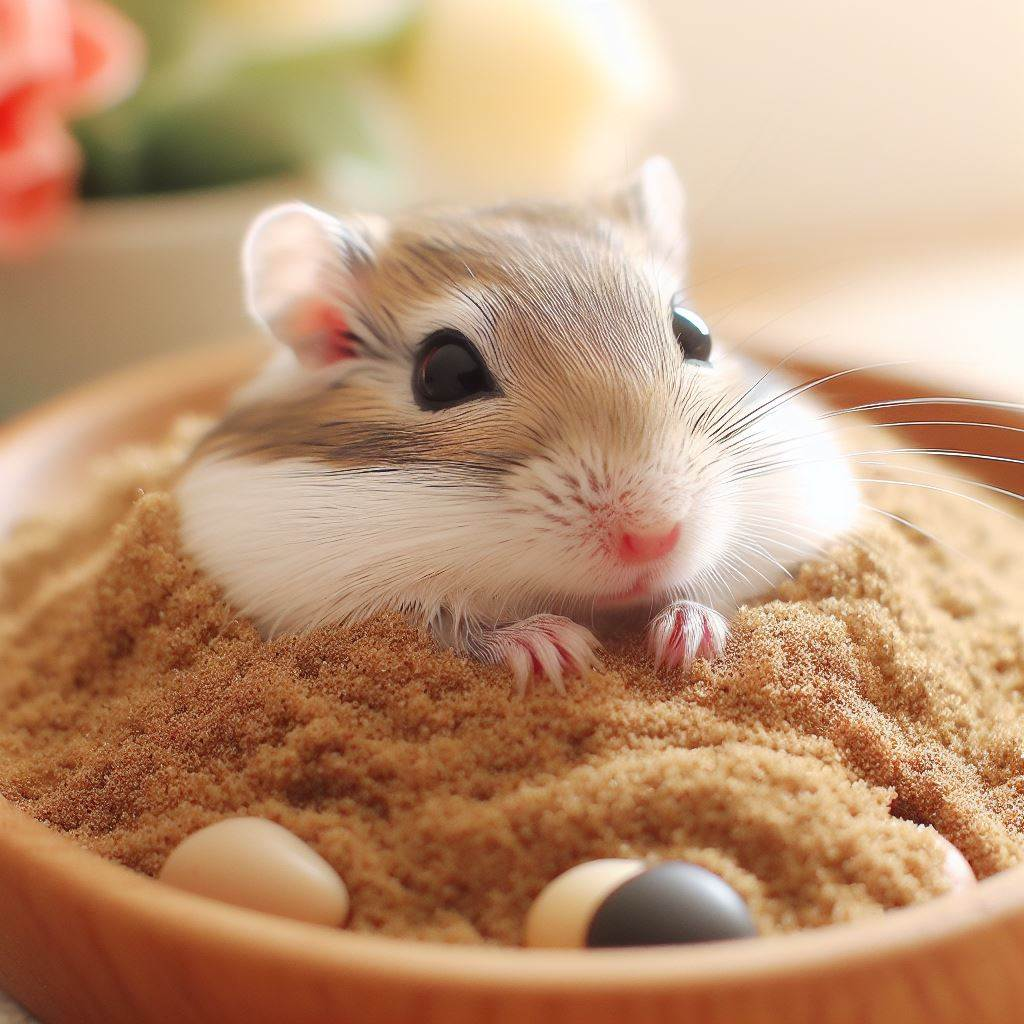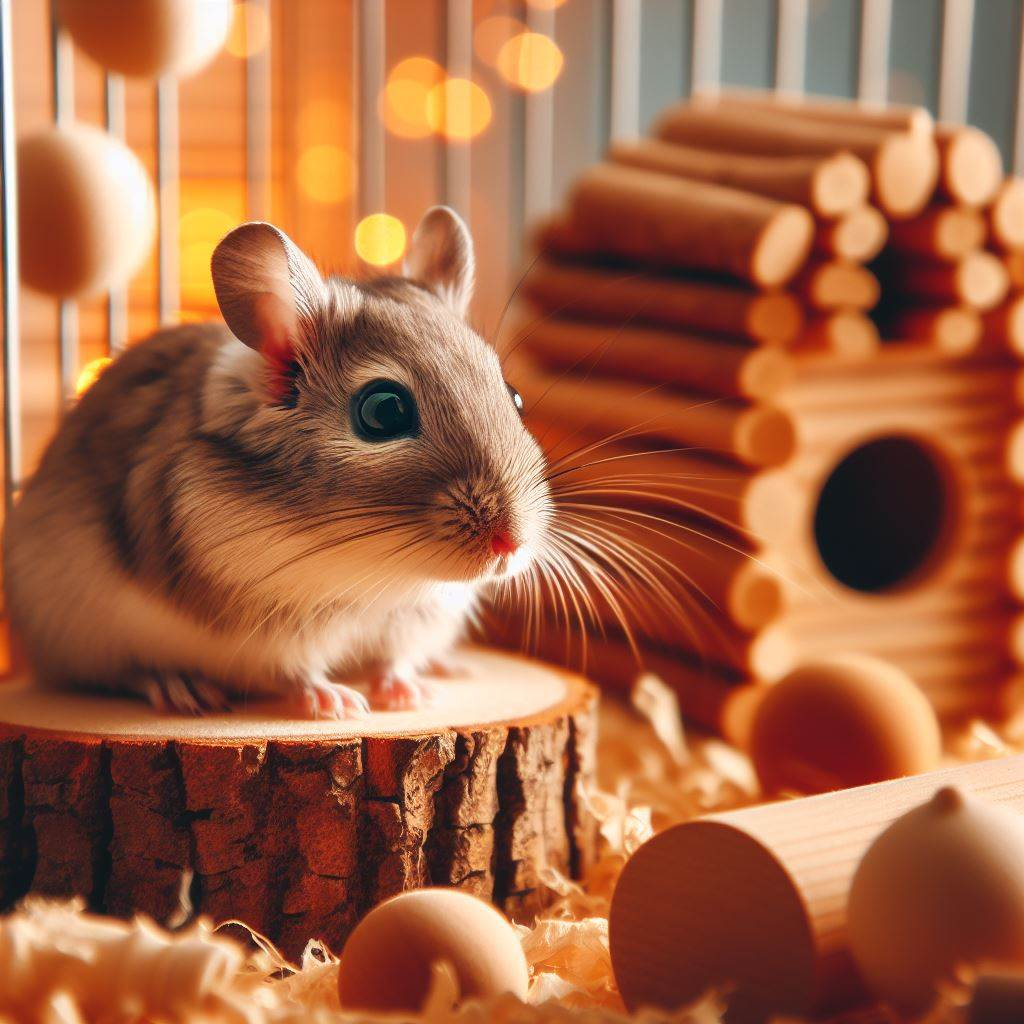Pet care often involves a ritualistic tenderness, ensuring they enjoy the most suitable and comfortable environment, especially for pets as sensitive to their surroundings as gerbils. As a seasoned gerbil keeper, I understand that selecting the right bedding material is an essential part of maintaining clean and healthy living conditions for gerbils. Sand is often mentioned in this context, but is it really suitable as bedding material for gerbils?
This article delves into the possibilities of using sand as bedding for gerbils, exploring its pros and cons. We’ll discuss how to select gerbil-friendly types of sand, maintain cleanliness to ensure bedding hygiene, and create an interactive and entertaining environment for your small animals using sand. Drawing upon my own experience as a keeper, along with expert advice, I’ll unravel all the mysteries surrounding sand as a bedding material for gerbils. Let’s begin, creating a warm and safe home for our furry companions!
Identifying Types of Sand and Their Suitability
Silica Sand (Health Hazards Associated with Diatomaceous Earth)
I’ve heard discussions on numerous occasions regarding diatomaceous earth sand and its impact on gerbil health. While this natural mineral boasts remarkable absorbency, it’s not a safe choice as bedding material due to the tiny dust particles it contains, which can be easily inhaled by gerbils, leading to respiratory issues. Moreover, the dust from this type of sand may irritate their sensitive eyes and skin. Therefore, when selecting bedding material, it’s crucial to ensure the sand is silica-free to avoid unnecessary harm to your little companions.
Specialized Sand for Pets
There are sands specially designed for pets available on the market, such as those labeled as “dust-free” products. They are usually processed to reduce dust and harmful substances. As an experienced keeper, I prefer these products because they not only provide gerbils with the sand-bathing pleasure they need but also reduce the threat to their health. However, this does not mean all pet-specific sands are equal. Readers should carefully examine the product ingredients to confirm their safety when making a selection.

Cleaning and Maintenance of Sand
Even specialized pet sands require regular cleaning and replacement to maintain cleanliness and hygiene in gerbil habitats. Sand can absorb gerbil bodily fluids and excrement, becoming a breeding ground for bacteria and odors if left uncleaned for long periods. I recommend thorough cleaning of the sand at least once a week, along with daily removal of obvious contaminated areas to keep the gerbil’s habitat fresh and comfortable.
Interaction Between Gerbils and Sand
Health Benefits of Sand Bathing
Sand bathing is a natural behavior for gerbils and is not only enjoyable but also essential for maintaining their fur health. Gerbils roll in the sand, using the abrasive action of sand grains to remove excess oil and dirt from their fur. From personal observation, gerbils that bathe regularly tend to have smoother fur and more agile movements. It’s crucial to provide them with fine sand to avoid skin abrasions.
Sand as Behavioral Stimulus
I’ve found that sand can serve as a medium to stimulate gerbils’ natural digging behavior, not just for sand bathing. For example, setting up a specific area in the cage with high-quality sand allows gerbils to engage in activities like digging and burrowing, which are beneficial for their physical and mental health. Through this approach, sand becomes a fun and enriching environmental material.
Criteria for Suitability
However, not all gerbils are enthusiastic about a full sand bedding. Each gerbil has its personality and preferences, with some naturally preferring sand while others may have underlying sensitivities. Before deciding on sand as the primary bedding material, keepers should observe their pet’s reactions and assess the suitability of the sand quality. Only by ensuring both are suitable can sand truly become the ideal choice for gerbils.
Considerations When Choosing and Using Sand
Avoiding Dust and Fine Particles
When selecting sand for gerbil bedding, the key consideration is to avoid high dust content. As fine particles, dust in sand can be harmful if frequently inhaled by gerbils, potentially leading to respiratory issues. Therefore, when purchasing sand, I suggest looking for low-dust sands specifically designed for small pets, as these products are usually sifted and processed to reduce the threat to pet respiratory health.
Combining Sand with Other Bedding Materials
In practical gerbil care, I often combine sand with other types of bedding materials like paper or wood shavings. This approach not only utilizes the advantages of various materials but also creates a diverse living environment for gerbils. For instance, placing a sand bath in one corner of the cage while using more absorbent materials in other areas ensures the gerbil’s bathing needs are met while maintaining overall cage cleanliness and dryness.
Recommendations for Sand Usage and Replacement Frequency
Regarding the amount of sand used and the frequency of replacement, I recommend adjusting based on cage size and gerbil living habits. Typically, the sand in the bath should allow gerbils to roll comfortably, while the total amount of sand in the cage should consider whether there is enough space for their activities. Sand should be replaced at least once a week to maintain cleanliness and prevent bacterial growth.
Summary and Conclusion
Through this discussion, we’ve learned about the importance of sand bathing for gerbils and how to select and use sand correctly to meet their instincts and needs. We’ve emphasized the importance of choosing low-dust sand for gerbil health and discussed how to combine sand bathing environments with other bedding materials to create a diverse and suitable living environment. Additionally, we’ve provided recommendations on the amount of sand to use and the frequency of replacement.
As pet keepers, providing a good living environment is our responsibility. Proper sand bathing can greatly improve the quality of life for gerbils and add fun to their daily activities. Every keeper should carefully observe their pet’s specific needs and adjust their care plan accordingly to ensure these small creatures can grow up healthy and happy.
I hope the information provided here will be helpful to you in caring for your gerbils. If you have unique gerbil care experiences or interesting pet stories to share, please feel free to leave a comment. Additionally, if you have any questions about gerbil care, I’m happy to provide assistance and advice.

Q&A
-
Why do gerbils need sand baths? Gerbils need sand baths to remove excess oil and dirt from their skin, maintaining the cleanliness and health of their fur. Sand bathing is not only enjoyable but also an essential activity for them.
-
How should I choose sand for my gerbil’s sand bath? You should choose low-dust sand specifically designed for small pets to avoid respiratory issues. Ensure the sand’s fineness is suitable for gerbil sand bathing and free from irritating or harmful chemicals.
-
How often should I change my gerbil’s sand bath sand?



